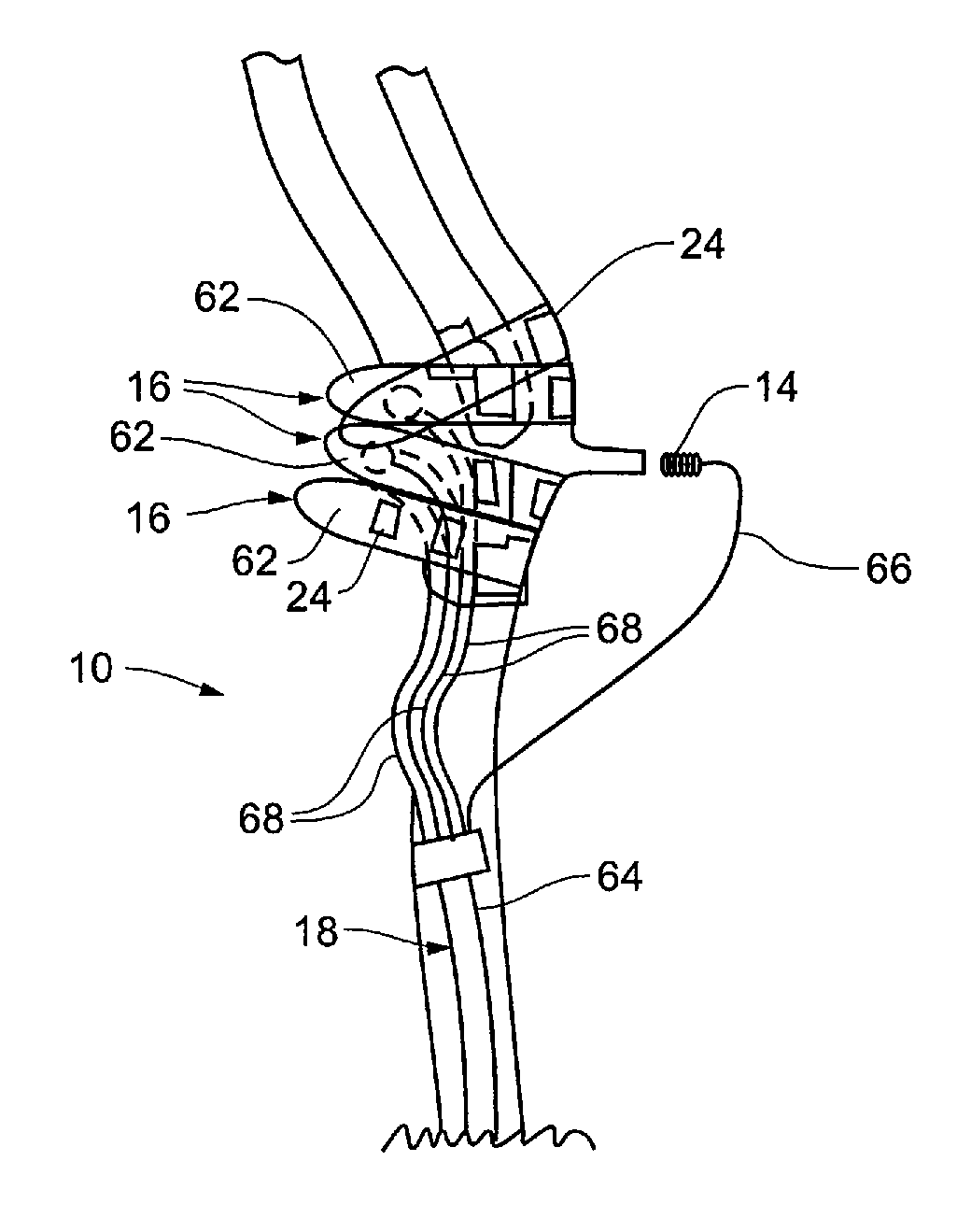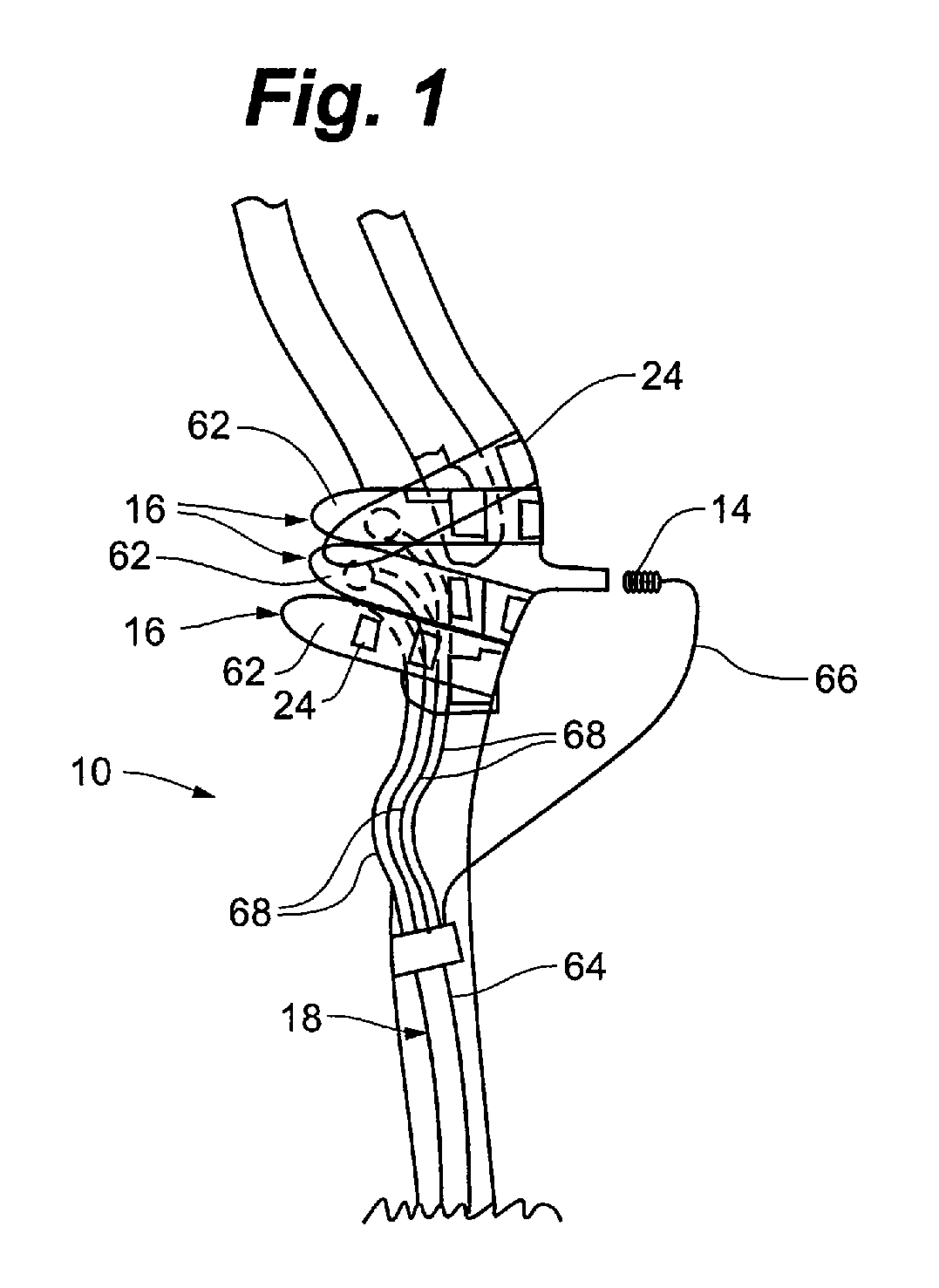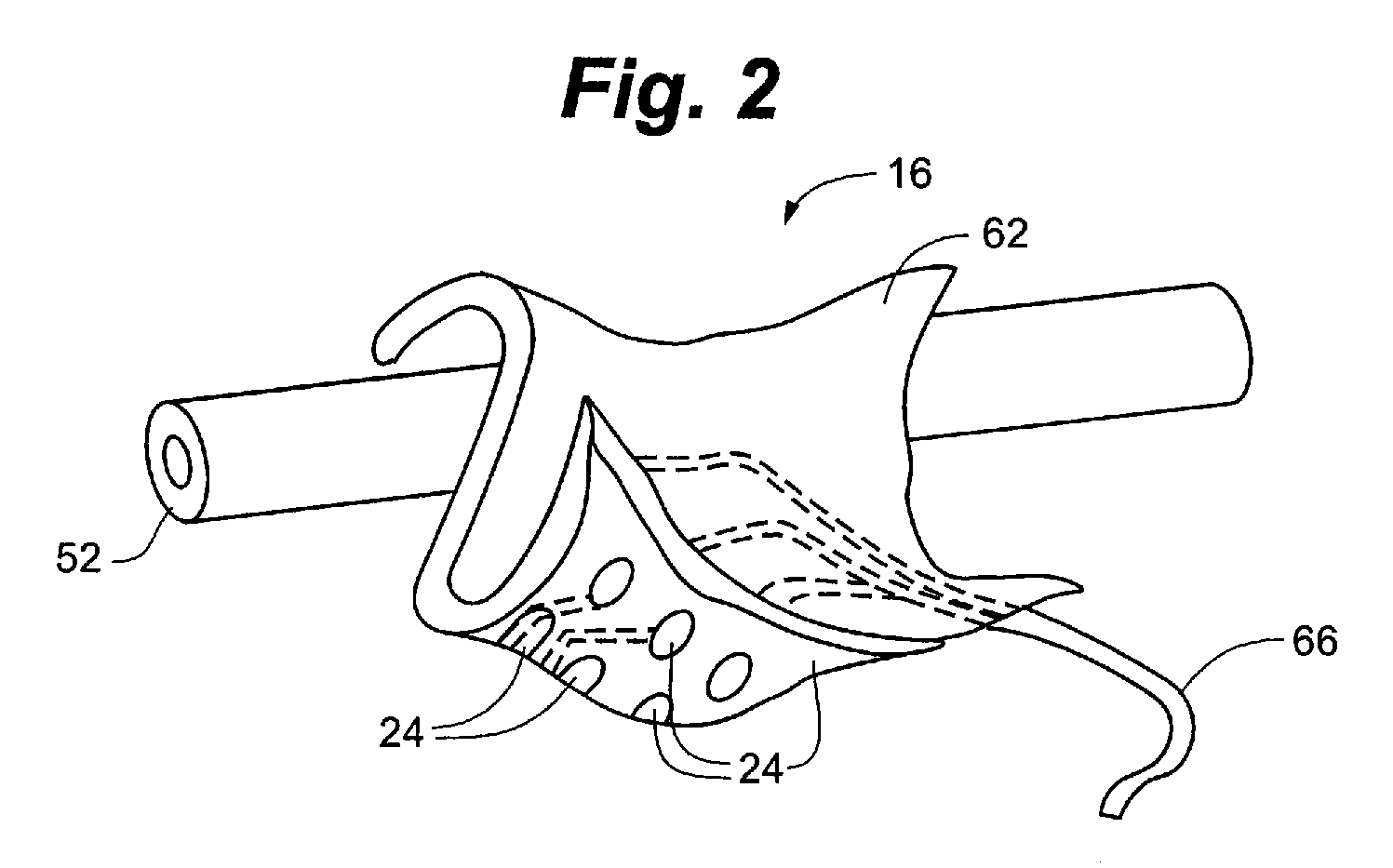Method and system for implantable pressure transducer for regulating blood pressure
a technology of implantable pressure transducers and blood pressure, which is applied in the field of implantable medical devices, can solve the problems of tens of thousands of patients' primary death causes, enlarged or damaged hearts (hypertrophy), and heart failure, and achieve the effects of reducing blood pressure, reducing or increasing blood pressure, and facilitating communication
- Summary
- Abstract
- Description
- Claims
- Application Information
AI Technical Summary
Benefits of technology
Problems solved by technology
Method used
Image
Examples
Embodiment Construction
[0030]The following detailed description should be read with reference to the drawings in which similar elements in different drawings are numbered the same. The drawings, which are not necessarily to scale, depict illustrative embodiments and are not intended to limit the scope of the invention.
Overview
[0031]Referring to FIGS. 1-3, the present invention is directed to an implanted medical device 10, a system 12 for operating implanted medical device 10, and method for implanting medical device 10. Medical device 10 generally comprises transducer 14, baroreflex activation device 16, and lead 18. In operation, medical device 10 is connected to control unit 20 as part of system 12. To address the problems of hypertension, heart failure, and other cardiovascular disorders, as well as certain renal disorders, a physiologic parameter, such as blood pressure. Depending upon an interpreted value of the measured physiologic parameter, baroreflex system 21 can be selectively stimulated so as...
PUM
 Login to View More
Login to View More Abstract
Description
Claims
Application Information
 Login to View More
Login to View More - R&D
- Intellectual Property
- Life Sciences
- Materials
- Tech Scout
- Unparalleled Data Quality
- Higher Quality Content
- 60% Fewer Hallucinations
Browse by: Latest US Patents, China's latest patents, Technical Efficacy Thesaurus, Application Domain, Technology Topic, Popular Technical Reports.
© 2025 PatSnap. All rights reserved.Legal|Privacy policy|Modern Slavery Act Transparency Statement|Sitemap|About US| Contact US: help@patsnap.com



